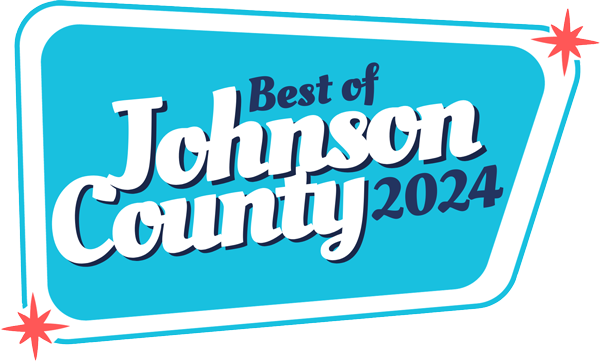6 Key Considerations for Your CCRC Decision Process
By Brad Breeding
Financially, emotionally, and from a practical perspective, choosing a continuing care retirement community (CCRC or “life plan” community) is a big decision. Here at myLifeSite, we strive to provide information and create resources that can help seniors make a more informed decision about whether this particular senior living option is right for them, and if so, which CCRC may be a good fit. After all, this is a choice that will impact your quality of life, health, happiness, and wallet for years to come.
To help make the CCRC decision process a little easier and more manageable, we have simplified the sometimes-overwhelming list of deciding factors into six key areas that consumers should evaluate when considering a CCRC.
Residences and amenities
When looking at a CCRC, among the easier things to assess are the physical campus and the various amenities provided by the community. I recommend you take several tours of the community’s residences, considering different floorplans and features, and then contemplate what is important to you. Be sure to do this at different times of the day so you can see how lighting impacts your potential residence and to get a feel for what goes on in the community at different times.
There is also an assortment of amenities that will be provided by a CCRC, though these offerings can vary widely from community to community, from basic services to high-end conveniences. You will need to determine which are essential and which, in your opinion, are just nice-to-haves.
Some amenities to look for may include: technology that helps residents stay safe as well as keep in touch with other residents and family; community gardens, libraries, walking trails, and manicured grounds; transportation services and planned excursions; resident-led activities and programs; multiple dining options like cafés and bistro-style settings; a fitness center, concierge-style services, move-in coordinators, and more.
Contract details
Generally speaking, there are five common types of CCRC contracts offered among communities: Type A (lifecare), Type B (modified), Type C (fee-for-service), Rental, and Equity/Co-op. And when it comes to entry fees (which almost all CCRCs require), some are refundable and others are not (or are only partly refundable).
Because they aren’t apples-to-apples, comparing the cost of these various types of CCRC contracts, especially in different parts of the country, can be challenging. A lifecare contract in Seattle may be substantially more than a fee-for-service contract in Cleveland. Or, suppose one CCRC’s campus and facilities are older and it has fewer amenities than another community.
Bottom line: It is critical that you have a thorough understanding of which contract is right for your particular situation, what is included in your monthly fee and what is not, stipulations regarding entry fee refunds (if applicable), and more.
Quality of care
CCRCs offer numerous attractive services and amenities for those living independently, but let’s keep sight of the primary reason for considering a CCRC: access to a continuum of care services. You want to be sure that the care services—both assisted living services as well as long-term skilled nursing care services within the on-site healthcare center—will be up to your expectations, should you one day need them.
You will want to do your due diligence research on the care provided by the CCRC, and there are a number of resources you can and should explore in order to do this. If the CCRC’s healthcare facility is Medicare-certified (as opposed to private pay only), you can check out their Center for Medicare and Medicaid Services (CMS) rating. You also can reach out to your state’s long-term care ombudsman program to see if the CCRC has had any complaints filed.
It’s wise to do some shoe-leather investigating yourself as well by visiting the healthcare center and observing how residents are being cared for, if the facilities appear clean and well-maintained, and if the staff appears to be content. I also recommend you get some first-hand reviews from the CCRC’s residents to see what their impressions have been of the care they and their fellow residents have received.
Management/Operations
A CCRC is home to its residents, but it is also a business, and like most businesses, CCRCs are usually only as good as their administrators. You want to ensure the CCRC you are considering is well-managed and in good financial standing.
The financial viability of the community is important in order to ensure that it will be able to provide residents the quality of care and services that they expect and have paid for into the future. Consider consulting with an accountant or financial professional who is well-versed in CCRC contracts and finances to ensure you will be getting what you expect and have paid for.
It’s also wise to understand the leadership structure of the community; get a feel for the expertise and experience brought by members of the board, and ask if residents are involved in a leadership capacity. A good relationship between the leadership teams and the residents can be highly beneficial to the overall success of the organization.
Financial impact
If you are considering a move to a CCRC, it’s crucial that you understand exactly how it will impact your personal finances in the long-term. Since cost and contract terms vary dramatically, it can be challenging to determine if you will be able to afford the cost of a CCRC over the long-haul.
Affordability is a common and understandable concern among those considering a CCRC. In fact, our recent 2019 myLIfeSite Consumer Survey revealed that this was one of the top reasons that prospective residents put off a move to a CCRC.
If you are comparing multiple communities, you want to be sure you are doing a true comparison of what each will cost so that you can make an informed decision about which one is right for you. The myLifeSite financial projection tool (a premium myLifeSite feature that you can utilize for less than $30 for 30 days of access) can simplify these calculations for you. Alternatively, many CCRCs across the country have access to a more advanced version of this tool and can run various projections and comparisons for you. And of course, always consult with your accountant and financial advisor to better understand how the cost of a CCRC will fit into your financial future. But in this case, it’s important to make sure they have a thorough understanding of how CCRC contracts work, and the intangible benefits.
Lifestyle and wellness
The concept of “lifestyle” relates to the factors that will impact your daily living experience within the community. It makes up the answer to the question, “Will I be happy and comfortable living here?” The CCRC you choose should foster your lifestyle preferences so that you can live the life you want to live.
“Lifestyle” is a highly individualized concept, so the priorities of one person may be different from another person’s, but important lifestyle-related considerations may include aspects such as lifelong learning opportunities, dining choices and meal plan flexibility, community involvement and volunteer opportunities, size and location of the CCRC, and general vitality level of the residents who live there.
CCRCs are changing their approach from a focus on reactive healthcare to proactive wellness and prevention, and are often touted for the many social and wellness benefits they offer their residents. In fact, a recent study found that CCRC residents are in fact happier and healthier than those who do not live in such a community. From fitness classes to continuing education to nutritious food offerings, a CCRC’s wellness programs should be designed to nurture residents’ minds, bodies, and spirits.
Many communities will allow you to stay on-site for a night or two to get a feel for what it’s like to live there and the lifestyle and wellness opportunities offered by the CCRC. I strongly encourage all CCRC prospects to take advantage of this option!
Six factors to streamline your CCRC decision
There are a variety of reasons making the choice to move to a CCRC more complex than most other senior living options. This is a BIG decision; there is no denying that! However, as you explore various CCRCs and consider different contract types, these six key factors above should remain top-of-mind.
There are countless checklists that have been created over the years, but most are either overly extensive and, therefore, impractical, or too vague to be helpful. That’s why the CCRC experts at myLifeSite are in the process of developing “The Ultimate CCRC Checklist,” which strikes the perfect balance between comprehensive and usable. We exclude the most obvious questions but list those that are important, though easy to overlook.



